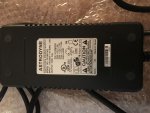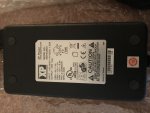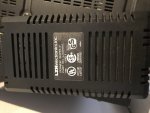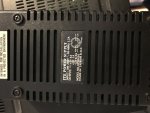brainditch
New member
Very good miroslav, thanks again for the research effort. I'm beginning to suspect that there was
in fact a typo in the original manual, that the callout for -12Vdc @ 3A, should have been -12Vdc @ 0.3A.
I'll need a little more evidence to be sure of this, obviously a PCB schemo. or a circuit trace would be the way to be absolutely certain, but your evidence is the best source we've got collectively, at the moment.
Anyone else (named in the posts above) care to weigh in and corroborate?
in fact a typo in the original manual, that the callout for -12Vdc @ 3A, should have been -12Vdc @ 0.3A.
I'll need a little more evidence to be sure of this, obviously a PCB schemo. or a circuit trace would be the way to be absolutely certain, but your evidence is the best source we've got collectively, at the moment.
Anyone else (named in the posts above) care to weigh in and corroborate?








